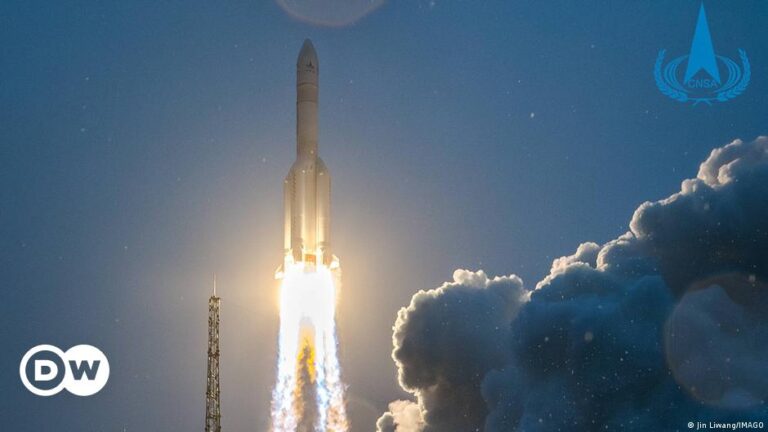China’s lunar probe has successfully landed on the far side of the moon and is expected to bring back soil and rocks in a first for the country, state news agency Xinhua reported Sunday.
Chang’e-6 landed in the vast South Pole-Aitken Basin, one of the largest known impact craters in the solar system, Xinhua reported, citing the China National Space Administration.
Chang’e-6’s complex mission began on May 3 and is expected to last 53 days.
What are the next steps in your investigation?
After landing, the probe will attempt to scoop up lunar soil and rocks from the little-explored far side of the moon, which is invisible from Earth and has received little scientific attention.
The lander will use a mechanical arm and drill to extract up to 2 kilograms (4.4 pounds) of surface and subsurface material to send back in a capsule currently orbiting the moon.
Scientists hope that the material collected may help shed light on how the Moon formed.
The Chinese probe will then attempt an unprecedented launch from that side of the moon.
China’s space ambitions
Under the term of Chinese President Xi Jinping, China’s space program has made many leaps forward, with significant resources poured into the programme over the past decade.
Among its notable achievements is building its own space station, Tiangong, due to launch in 2021, after being excluded from the International Space Station amid growing competition with the United States and concerns in Washington that China was using its space program to cover up military objectives.
Beijing has also landed robotic rovers on Mars and the Moon, and aims to send a manned probe to the Moon by 2030 and return samples from Mars around the same time.
China conducted its first manned space mission in 2003, becoming only the third country to send humans into space using its own resources, after the former Soviet Union and the United States.
rmt/kb (AFP, AP)

